Blog
-
Posted: September 25, 2017Read more »
This is the ICC Compression Tool for RG59 & RG6 cable for use with F-Type connectors. The compression tool utilizes an ergonomic design and a rubberized grip for an efficient and comfortable termination process. It is made using a high quality hardened steel construction. Compatible with RG59 and RG6 cable, it is capable of terminating F-type connections. The ICC compression tool is a quick and easy solution for all your coaxial projects. For more information on our products, please contact our customer service department at 888-519-9505.
-
Posted: September 25, 2017Read more »
This is the ICC Ratchet Compression Tool for RG59 and RG6 for use with F-Type, BNC and RCA connectors. The compression tool features rubberized grip handles for efficient, yet comfortable termination. And is made using a high quality hardened steel construction. There are adjustable die sets, allowing you to terminate F-type, BNC, and RCA compression connectors, all with the same tool. It utilizes a one-cycle full ratchet mechanism ensuring a reliable termination. And includes a release knob, to adjust tension. Compatible with RG59 and RG6 cable and capable of terminating F-type, BNC and RCA connections. The ICC Ratchet Compression tool is a quick and easy solution for your coaxial projects. For more information on our products, please contact our customer service department at 888-519-9505.
-
Posted: September 25, 2017Categories: XLR CablesRead more »
DMX cables are commonly used for high-end lighting and stage equipment. Our cables feature high quality rugged DMX connectors and are made using true 110-ohm cable that minimizes signal reflections for accurate data transfer. The DMX cable is made using 24 gauge OFC conductors surrounded by a high-density OFC braided shield for superior EMI and RFI rejection. The DMX cables for lighting are available in both a 3-pin and 5-pin, Male to Female orientation. In lengths from 3 FT to 100 FT. XLR cables are most frequently used for audio, and DMX cables are used for lighting applications. DMX cables are a perfect solution for your lighting projects. For more information on our DMX cables for lighting and DMX adapters, please contact our customer service department at 888-519-9505.
-
Posted: September 25, 2017Categories: XLR CablesRead more »
What Are XLR Cables? XLR cables are a key component for a variety of professional applications because they can provide excellent signal strength. They are typically used for either audio or lighting applications and there are some slight differences between the two styles. XLR cables used for audio are commonly a three-pin orientation and are designed for low frequencies associated with audio signals. They are a 75-ohm low impedance high capacitance cable. They are most frequently used with microphones, amplifiers, instruments, and speakers. XLR cables used for lighting, also called DMX cable, is designed for 110-ohm high impedance, low capacitance and uses either 3 pin or 5 pin orientation. They are most frequently used with high end lighting and stage equipment. Because of the difference in impedance, you should not use an audio XLR cable as a DMX cable or vice versa. Both the standard XLR and DMX cables can offer superior signal integrity depending on the application needed for your project.For more information on our what are XLR cables and what are XLR cables used for, as well as info on XLR connectors and XLR adapters, please contact our customer service department at 866-952-4787.
-
Read more »
This is the 4 way composite RCA splitter. It features a DC jack and 5 sets of composite RCA jacks, one input and four outputs, on one side. And a power switch and LED indicator on the other side. As well as an included power supply. The splitter will allow you to send your signal from one source to multiple displays. Perfect for projecting your image on various screens. The splitter can support a composite video signal range from 50 Hz to 5.5 Mhz to ensure audio and video integrity. The 4 way composite RCA splitter is a quick and easy solution for your video projects. For more information on our RCA splitter products or even if you need a 3.5mm audio jack, please contact our customer service department at 888-519-9505. For all your cable and connector needs, choose Show Me Cables.
-
Posted: September 25, 2017Categories: ConnectorRead more »
This is the C14 to C5 Power Adapter. It features a C14 connector on one side. And a C5 connector on the other side. The adapter is rated for 10 amps at 240 volts. The adapter will allow you to change a C13 cable into a C5 cable The C14 to C5 Power Adapter is a quick and easy solution for your cabling projects. For more information on our products, please contact our customer service department at 888-519-9505. For all your cable and connector needs, choose Show Me Cables.
-
Posted: August 31, 2017Read more »
For over twenty years, ShowMeCables has been designing, prototyping and manufacturing custom cables. With manufacturing facilities in the United States and Asia, we have the capabilities to manufacture at any volume. No matter the type, size or budget, we can help!
Any Size
We handle any size project, small to large. Our in-house prototyping can build a single cable for your project. Our international factory can turn that single cable into a full OEM production line.Any Challenge
No matter what type of cable you need, we can help. We specialize in custom network, fiber, coax, telephone, telco, audio/video, and serial cables. We also provide custom kits, bundles and cable sleeving.Capabilities
- Custom Manufacturing
- In-House Prototyping
- Custom Imprinting
- Cables Tested
- Quality Check
- Custom Packaging
- Just In Time Delivery
- Free Blind Drop Shipping
- Highly Skilled Sales Staff
- Expert Technical Support
Any Budget
With flexible manufacturing options, we can make custom affordable. Let our team of experts provide consultation and cost saving solutions, including internationally manufactured options.Any TimeframeWe specialize in quick turnaround custom projects. When you’re in a jam and need cables quickly, only we can help. Or, if you have a longer time frame for your custom project, our international manufacturing can save you money.Custom Network Cables
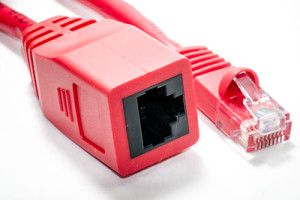
Our custom Cat5e, Cat6, Cat6a & Cat7 cables can be made to your exact specifications. Typical requests we handle
-
Posted: August 30, 2017Read more »
When shopping for Cat5e or Cat6 network cables, make sure you are comparing apples to apples. One of the most common tactics of the “low cost leaders” is to use aluminum instead of copper wire. This can lead to network issues from using inferior materials to transmit the signal. The problem is further heightened because there are no visual differences between a CCA cable and a pure copper cable. ShowMeCables guarantees that all of our patch cables are pure copper and are ready for Cat5e, Cat6, Cat6a or Cat7 networks.
Creating a Copper Clad Aluminum Cable
Looking to cut costs, manufacturers started using aluminum wire dipped in a thin coating of copper. This technique created an aluminum core cable surrounded by a thin layer of copper. If you have ever purchased coax cable, you may have purchased cable that is copper clad. If you scrape the center conductor, the gold copper will flake off and expose the silver metal core. Consumer ignorance, slick marketing and an identical appearance have allowed copper clad aluminum patch cables to become more common in the marketplace.
The Dangers of Using CCA Cables
The performance and safety of CCA cables are radically different. In fact, aluminum network cables violate TIA and IEC standards for Cat5e and Cat6 cables. Aluminum patch cables, often marked as CCA or CCE (for Copper Clad Ethernet), has higher attenuation than pure copper cables. This results in a greater loss of data, as packets have to be re-transmitted. The more data that is re-transmitted, the slower your network performs. Plus, these problems are compounded by every foot of cable you use; the longer the cable, the worse the performance. Is the hit in network performance worth saving a few cents? CCA cables also have a 55% higher DC resistance. This increases the amount of energy that is transferred into heat
-
Posted: August 30, 2017Categories: ConnectorRead more »
The SMA connector(SubMiniature version A) is a 50 ohm coaxial connector. It is visually similar to an F type connector that is commonly used for audio/video communication, but has different dimensions, mechanical properties and is used for different applications such as RF communications up to 18 GHz. Due to its construction, SMA connectors provide a strong and durable connection that minimizes reflections, limiting attenuation, and makes it a great choice when working with microwave frequencies.
SMA Male Connector
The SMA male connector is identified by inside 1/4″-36 threads and a 5/16″ hex nut. A standard polarity connector will have a male pin.
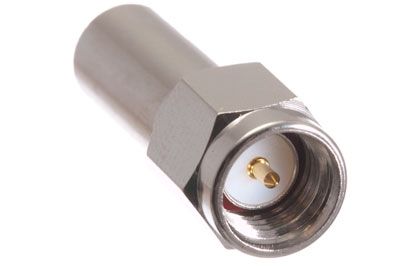
SMA Male Dimensions- Outer Diameter: 6.35mm
- Inner Diameter: 4.59mm
- Pin Diameter: .97mm
- Pin Tip Diameter: .38mm
SMA Female Connector
The SMA female connector is identified by outside 1/4″-36 threads. A standard polarity connector will have a female sleeve.
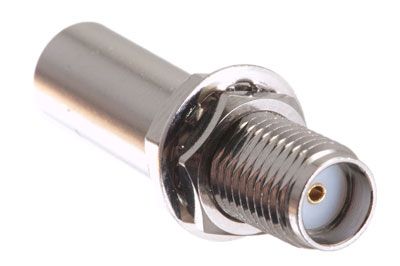
SMA Female Dimensions
- Outer Diameter: 5.49mm
- Inner Diameter: 4.60mm
- Pin Insert Diameter: 1.30mm
Reverse Polarity (RP) SMA Male Connector
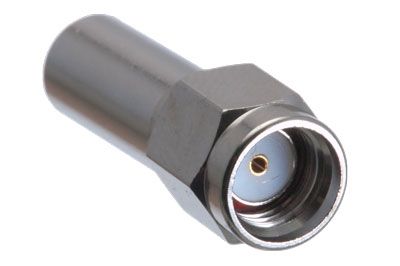
The RP SMA male connector is identified by inside 1/4″-36 threads
-
Posted: August 30, 2017Read more »
If you’ve spent any time on the Internet in the last year, chances are you seen some great examples for how to organize long cables. Today, the ShowMeCables blog is bringing you a DIY for creating a similar effect in your own storage closet.
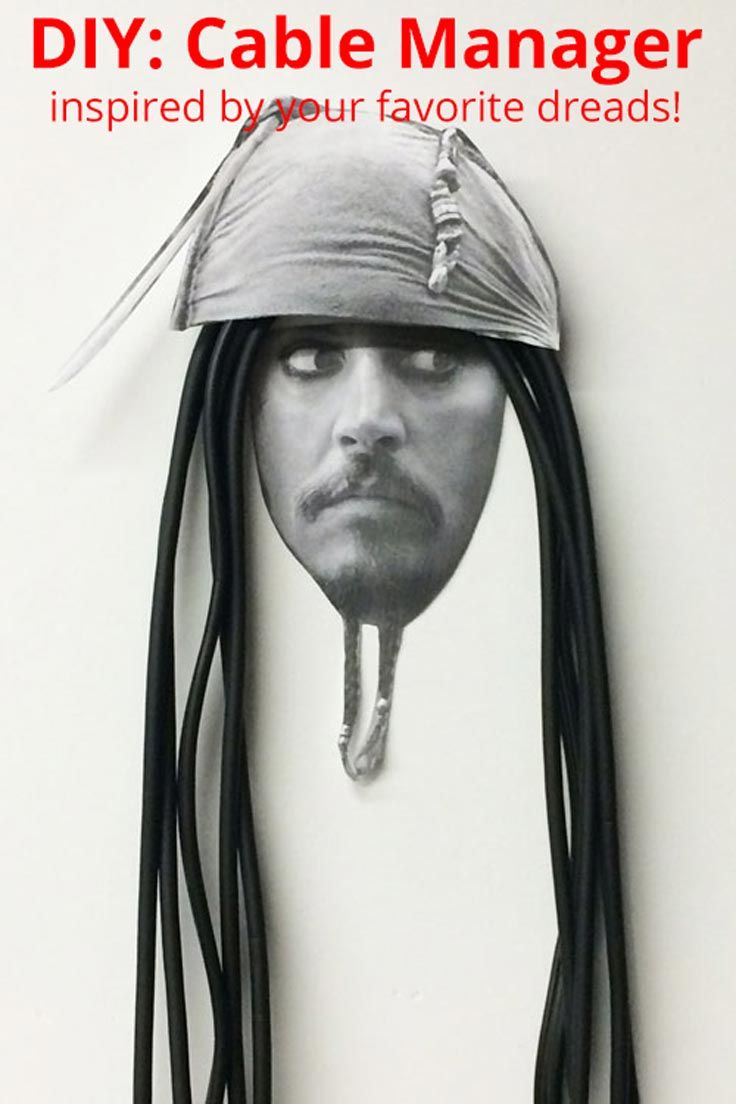
Step 1. Choose Your Model
This is, arguably, the hardest step of the process as there are many different routes to take. Just the word “dreadlocks” conjures up images of the well-loved Rastafarian Bob Marley, the godfather of dreads himself. Wiz Khalifa, the lead singers of Korn and Whoopie Goldberg also sport the famous hairstyle with

effortlessness. For the adventurers out there, Captain Jack Sparrow and Michonne from the Walking Dead each sport their dreads with fantastic accessories. Then there’s always Bradley Cooper’s character from the movie Hit and Run if you’re into more obscure references. This is also a fantastic opportunity to see how you or a co-worker would look with dreads. In that case, take a selfie or do some Facebook stalking to get the pictures that you’ll need.
Step 2. Print and Cut
Once you’ve come to a decision on your model, go find a large image that has a clear view of the face. Print your picture, then grab your trusty scissors. Cut around the face ever so carefully, removing the neck, hair and whatever else is in the picture. If your model rocks a headband or hat, cut that out too and save it for the next step.
&

